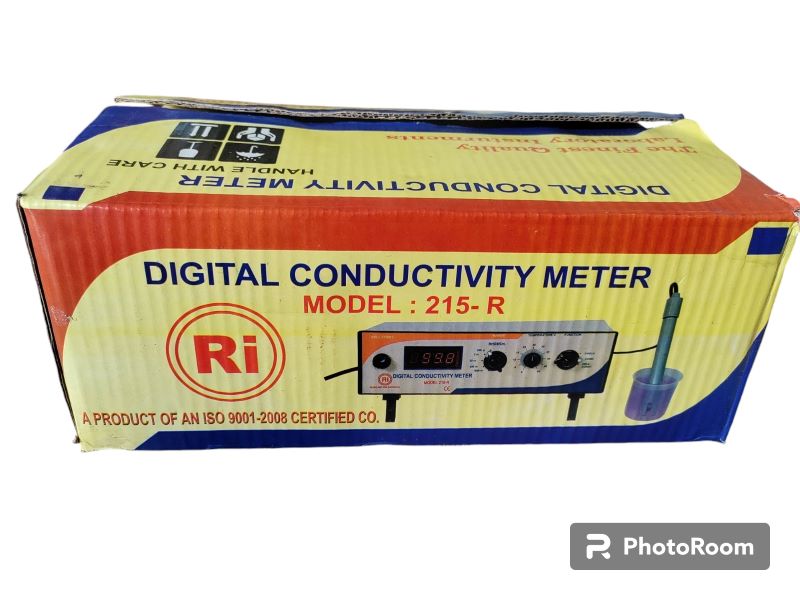### **Key Features:**
1. **Material Construction:**
– **Mild Steel:** The meter’s housing is made from mild steel, which is a common choice due to its strength and durability. However, mild steel might be prone to corrosion, so the device may have a coating or be treated to withstand the laboratory environment.
2. **Digital Display:**
– **Digital Readout:** Provides precise and easy-to-read measurements of conductivity. Typically, the display will show the conductivity value in microsiemens per centimeter (µS/cm) or millisiemens per centimeter (mS/cm), depending on the expected range.
3. **Conductivity Measurement:**
– **Range and Accuracy:** Measures the ability of a liquid to conduct an electrical current, which is useful for assessing purity, concentration, and various properties of solutions. The range and accuracy of measurements will depend on the specific model.
4. **Calibration:**
– **Calibration Options:** Many digital conductivity meters offer calibration options to ensure accurate readings. Calibration is usually done with standard solutions provided by the manufacturer.
5. **User Interface:**
– **Controls and Settings:** The meter will likely have buttons or a touchscreen for setting up and navigating through different measurement modes or calibration settings.
6. **Probe Compatibility:**
– **Electrodes or Probes:** Conductivity meters typically come with or are compatible with various probes or electrodes designed to be immersed in the liquid being tested. Ensure that the meter is compatible with the type of probe you need.
7. **Temperature Compensation:**
– **Automatic Temperature Compensation (ATC):** Conductivity measurements can be affected by temperature, so many meters include ATC to adjust readings based on the temperature of the liquid.
### **Considerations:**
– **Durability and Maintenance:** Ensure that the mild steel construction is suitable for your laboratory environment and that you can maintain or clean the meter effectively.
– **Calibration Solutions:** Verify that you have the correct calibration solutions and procedures for accurate measurement.
– **Compatibility:** Check if the meter’s specifications match your requirements, including the range and type of solutions you’ll be testing.
If you have any specific requirements or additional features you’re looking for, let me know!








Leave a Reply